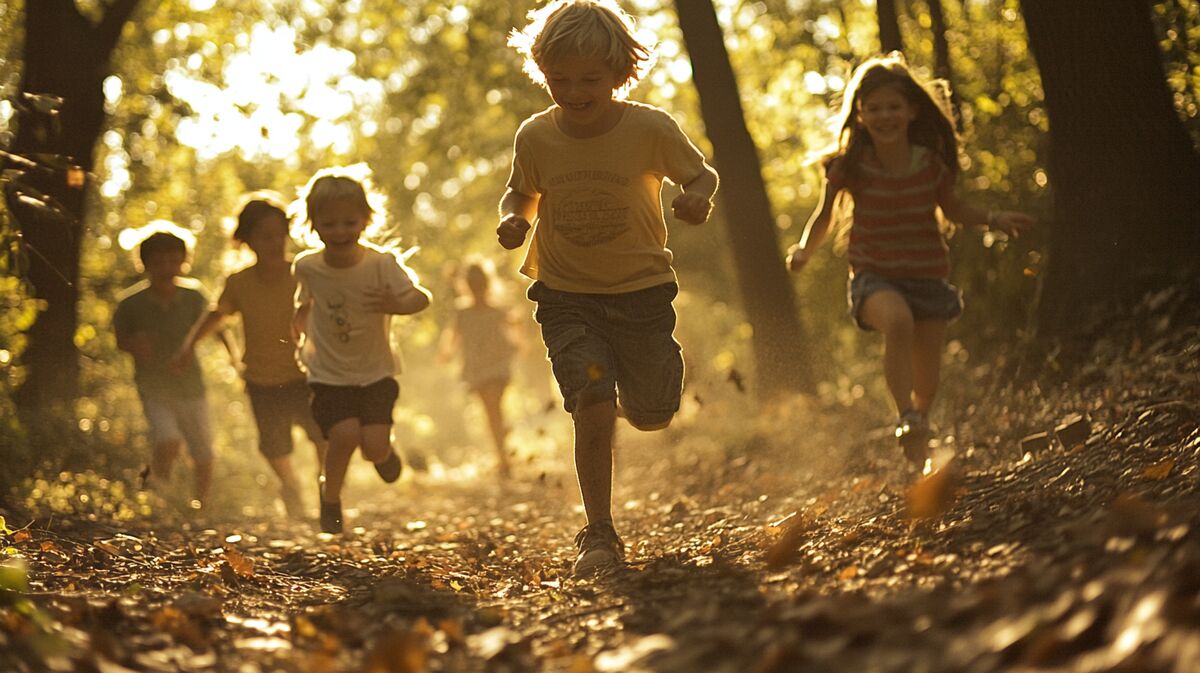
Games while hiking: These 36 game ideas are guaranteed to bring good mood
👉 The key facts from this guide
- Hiking games provide entertainment and make time pass more quickly – perfect for preventing boredom during long hikes, especially with children.
- Treasure hunts and word chain games can playfully explore nature and bring great joy to both big and small hikers.
- Movement games like "Hiking Shoe Throw" or "Pine Cone Throw" offer variety during breaks and additionally promote coordination and concentration.
- Cooperative games like "Chinese Whisper" or the "Story Stone" strengthen group cohesion and often bring shared fun.
- Many games require no equipment, such as "I spy with my little eye," "Who am I?" or the "Nose game," and focus attention on the surroundings.
- For variety, geocaching apps or nature apps can turn the hike into a modern treasure hunt or educational journey.
Is hiking the miller's delight?
Well, not always.
Sometimes it takes a little variety to maintain the cheerful mood during a long hike.
Whether you're hiking alone, with the whole family, or in a group, the right games while hiking can provide entertainment and make the time fly by.
In this article, I will introduce you to my 36 most entertaining hiking games that are guaranteed to create a good atmosphere and leave no chance for boredom.
Which games are particularly suitable for hikes with children?
Fact is: Hiking with children can be a challenge.
I know it all too well: The sentences "Dad, when are we finally there?" or "Mom, I can't go on anymore." probably also occasionally ring in your ear.
My experience, however, is that the right game ideas during a hike silence these sentences.
With games, time is better for everyone and time flies by.
Furthermore, children and adults have fun together and explore nature while playfully perceiving their surroundings.
A popular game that is great for hikes is, for example, the treasure hunt, the story stone, the sniff game, or animal guessing.
Let's now dive into the world of hiking games.
How to organize a treasure hunt while hiking?
Organizing a treasure hunt while hiking is easier than you think. Prepare small clues or puzzles before the hike that lead to a hidden "treasure."
This can be a bag of gummy bears or another small surprise. Distribute the clues along the hiking trail and let the children find and solve them. (I sometimes sneak ahead and prepare the treasure hunt)
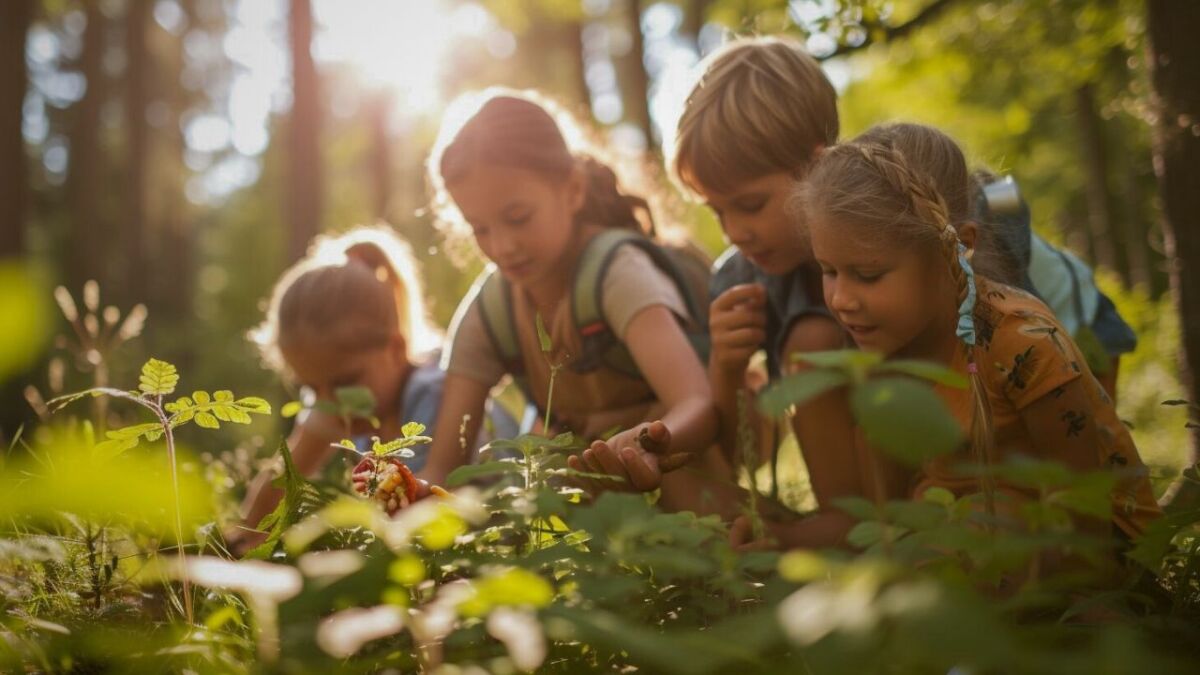
A treasure hunt not only enhances observation skills but also distracts from possible fatigue and brings new energy. The treasure hunt also stimulates the imagination and ensures that the children continue to hike with enthusiasm.
What simple word games are fun for children?
Word games are classic games for walking that require no additional equipment.
A popular game is the "Word Chain", where players must take turns naming words that start with the last letter of the previous word.
Here is an example:
- Person 1 says: Tree
- Person 2 says: Eagle
- Person 3 says: Elephant
- Person 4 says: Tiger
- Person 1 says: Rabit
- etc.
A slightly more challenging variant for older children or adults is the "category word chain", finding only words belonging to a specific category, e.g., animals or plants.
I enjoy playing the game with my children. It trains vocabulary and directs attention to the surroundings.
Another variant is the "Syllable Word Chain", where the next word must start with the last syllable of the previous word.
For advanced players, you can also play a "backward word chain", where the words must be spelled backwards.
These variants challenge the brain in different ways and provide lasting entertainment while hiking.
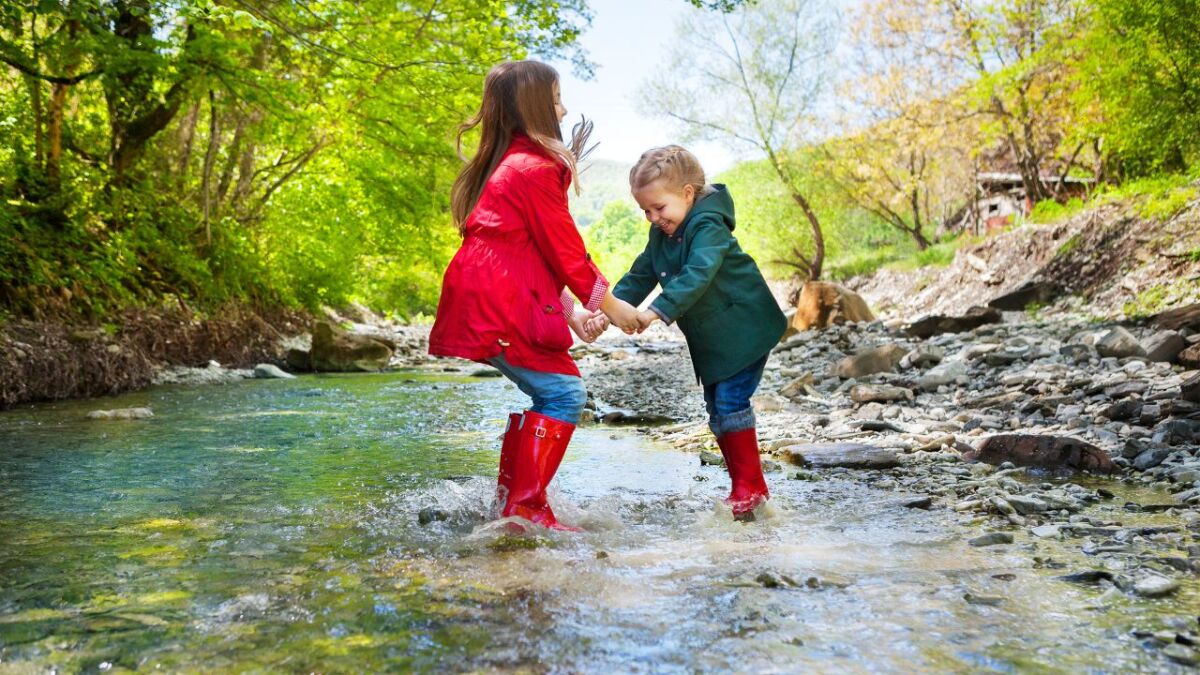
Are there movement games suitable for breaks?
During a hiking break, my movement games are often a welcome change.
Here are my ideas:
- "Hiking Shoe Throw" is a fun game where participants try to throw their hiking shoe as far as possible. Of course, you should ensure that this only takes place in a suitable, open area.
- Another game could be "Natural Material Relay", where teams have to collect items like leaves, stones, or cones and bring them to a specific point.
- Then there's the classic "Hide and Seek", but with a twist. One person quickly counts to 10 with their eyes closed while everyone else hides as close as possible. The seeker must not move from their spot. If they don't see anyone, they count to 10 again with their eyes closed, and everyone else must find a new hiding spot that is even closer to the seeker.
- Or do you know "Group Hide and Seek"? One person hides, and anyone who finds them must quietly and secretly join the hiding spot and hide in the same place from the others.
- If I'm in a coniferous forest, I play "Cones Throwing". Mark a target like a tree stump. The children throw cones and try to hit the target.
This game is not only fun but also improves hand-eye coordination, concentration, and accuracy.
These games provide movement and good mood without the need for additional equipment.
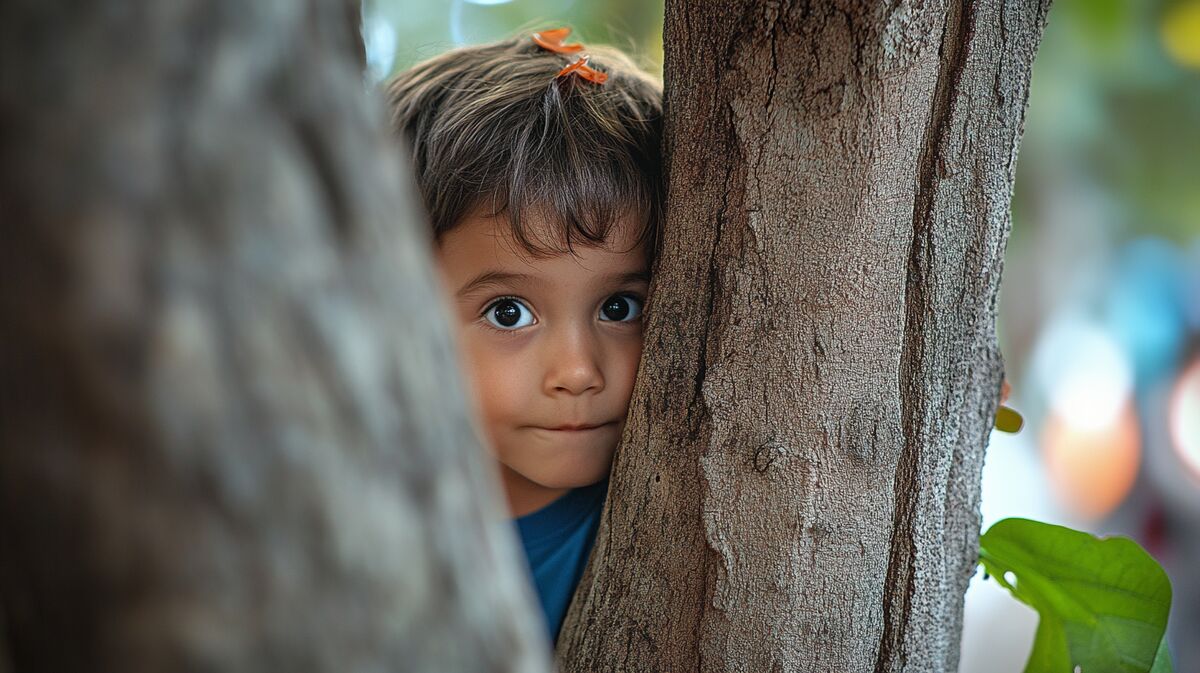
How do hiking games create good mood for the whole family?
Hiking games are not only a great way to prevent boredom, but they can also strengthen the bond within the family/group and create a cheerful atmosphere.
By playing together, all family members create a sense of community and shared experience.
Which games promote cohesion in the group?
Cooperative games are particularly well suited to promote cohesion within the group.
Here popular games and ideas:
- A classic example is the "Whispering Game", where a message or a word is whispered from person to person. This also works well when hiking in a group.
- Another game could be "Counting Together", where the group tries to count up to a certain number without two people speaking at the same time.
- Another game that I enjoy playing is the "Story Stone". A stone is passed around the group. Whoever holds the stone adds a sentence to a shared nature story.
These games require collaboration and attention and often lead to a lot of laughter.
How can you prevent boredom while hiking?
To prevent boredom while hiking, I recommend having a variety of games in your repertoire.
It's best to alternate between different types of games to keep the attention of your children or fellow players.
In addition to word games and observation games, fantasy games like "What if ..." can also provide variety.
Participants come up with absurd scenarios and discuss them. This stimulates creativity and can lead to amusing conversations.
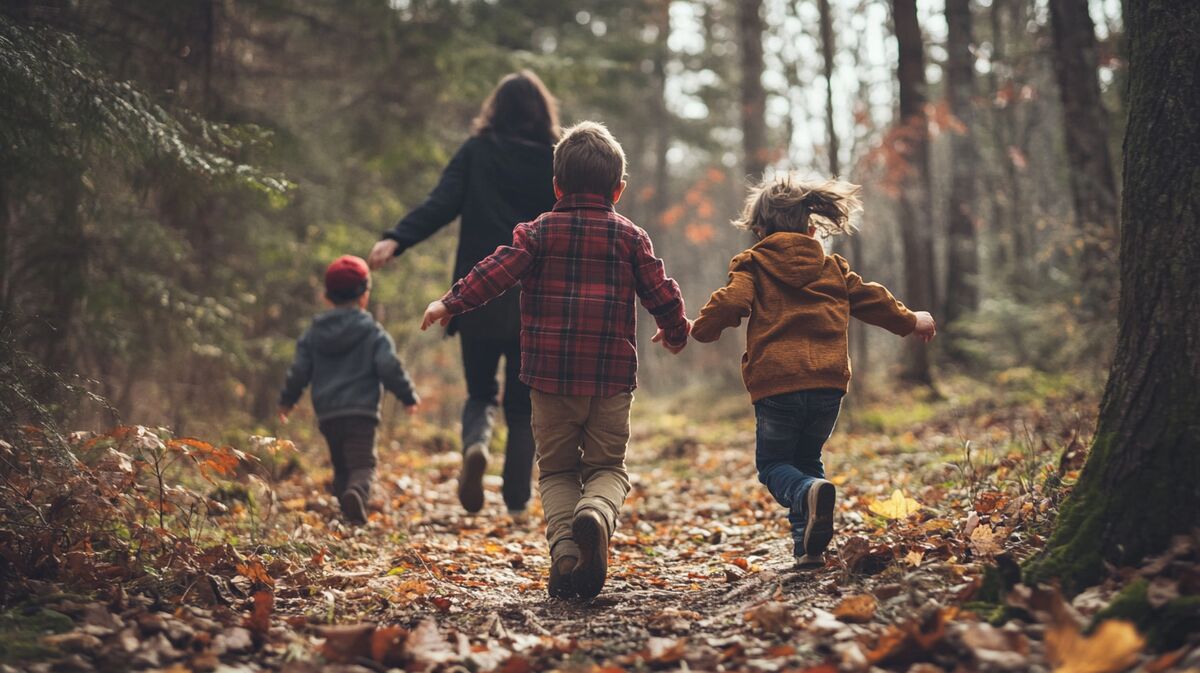
Which games are suitable for different age groups?
For hikes that involve both children and adults, it is important to choose games that are suitable for all age groups.
"I pack my suitcase" is a classic game that can easily be adapted to different levels of difficulty.
Younger children can name simple objects, while adults can add more complex or thematically appropriate items.
Another intergenerational game is "20 Questions", where one player thinks of something and the others have to guess what it is by asking questions. Only yes/no answers are allowed here.
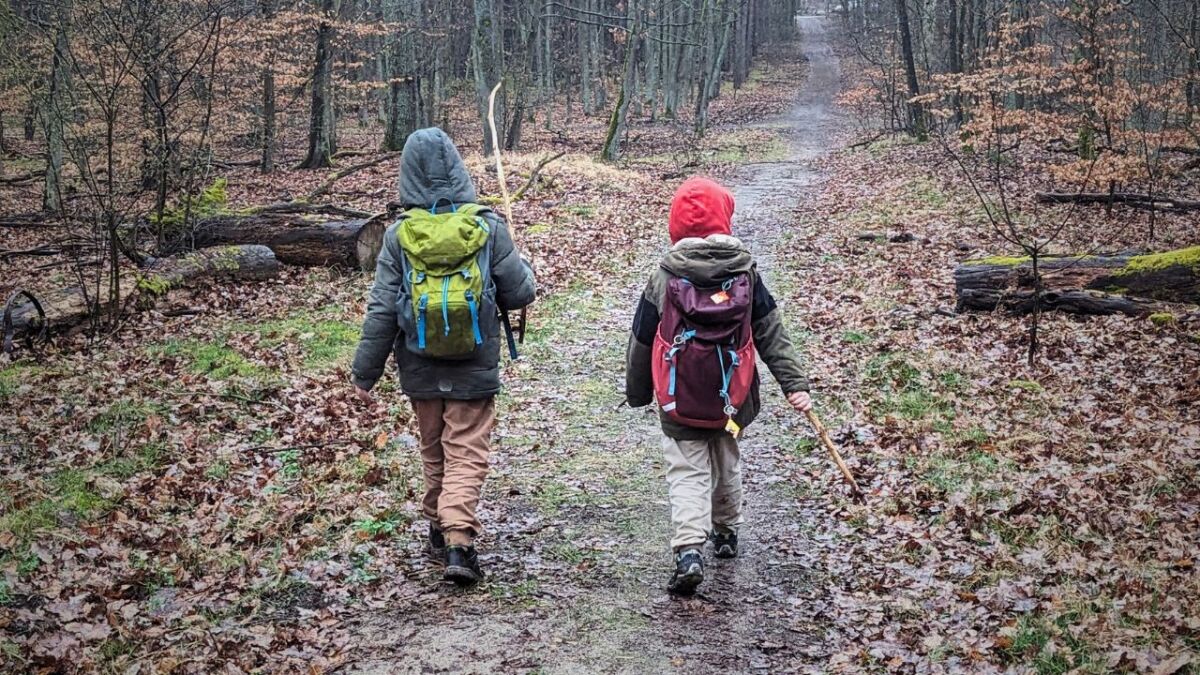
Which outdoor games require no additional equipment?
One of the great challenges of hiking is keeping the luggage light (Read here: The 30+ best items for a hike – what you should pack).
Fortunately, there are many outdoor games that require no additional equipment and still bring good cheer.
These games often utilize the natural environment or are based on creativity and imagination.
How does the game "I spy with my little eye" work?
"I spy with my little eye" is a classic game that is perfect for hikes.
A player selects a visible object and gives the others a hint, usually in the form of a color.
So for example, "I see something that you don't see and that is yellow.".
The other players then have to guess which object is meant.
This game trains observation skills and directs attention to the environment. It can be varied in any way by using other properties such as shape, size, or function instead of colors.
Here are examples:
- I see something that you don't see and it's round.
- I see something that you don't see and it's as small as a coin.
- I see something that you don't see and it protects against heat.
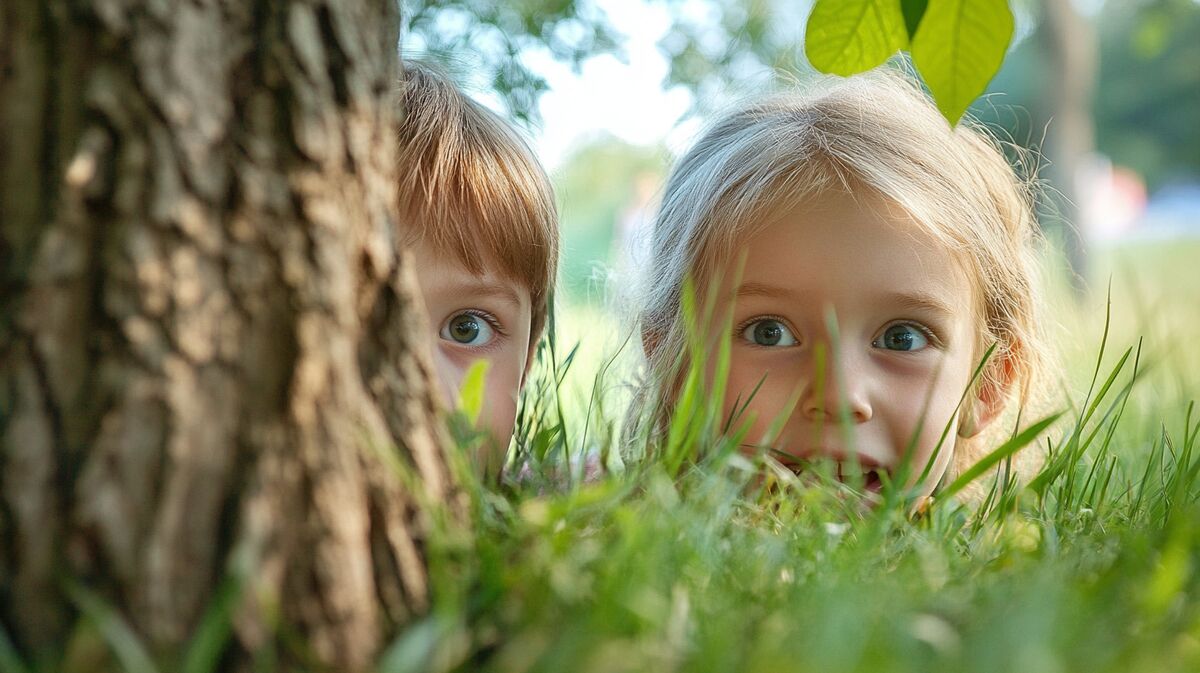
How do you play "Who am I?" while hiking?
The game "Who am I?" can be easily adapted to a hiking situation. Each player thinks of a person, an animal, or an object and writes it on a note that they stick to their forehead (or attach to a teammate's back).
Then the players must find out who or what they are by asking yes/no questions. To make the game more hiker-friendly, one can do without the slips of paper and simply whisper the terms into the neighbor's ear instead.
This game promotes logical thinking and can lead to many fun moments.
The nose game is a hit when hiking with children
The game "Nose Game" is one of my favorite games. In this game, animals have to be guessed based on their characteristics. We come together in a circle and sit down (it can also be played while walking).
The nose game is from the book "Cornell's Nature Experience Games for Children and Youth”.
And it goes like this:
- I read a statement and anyone who thinks they know the animal puts their finger on their nose.
- They must not say out loud what they think.
- If the next statement is no longer appropriate, then the person should pretend to scratch their nose or adjust their hair and remove their finger again.
- At the end of the statements, everyone can say the animal.
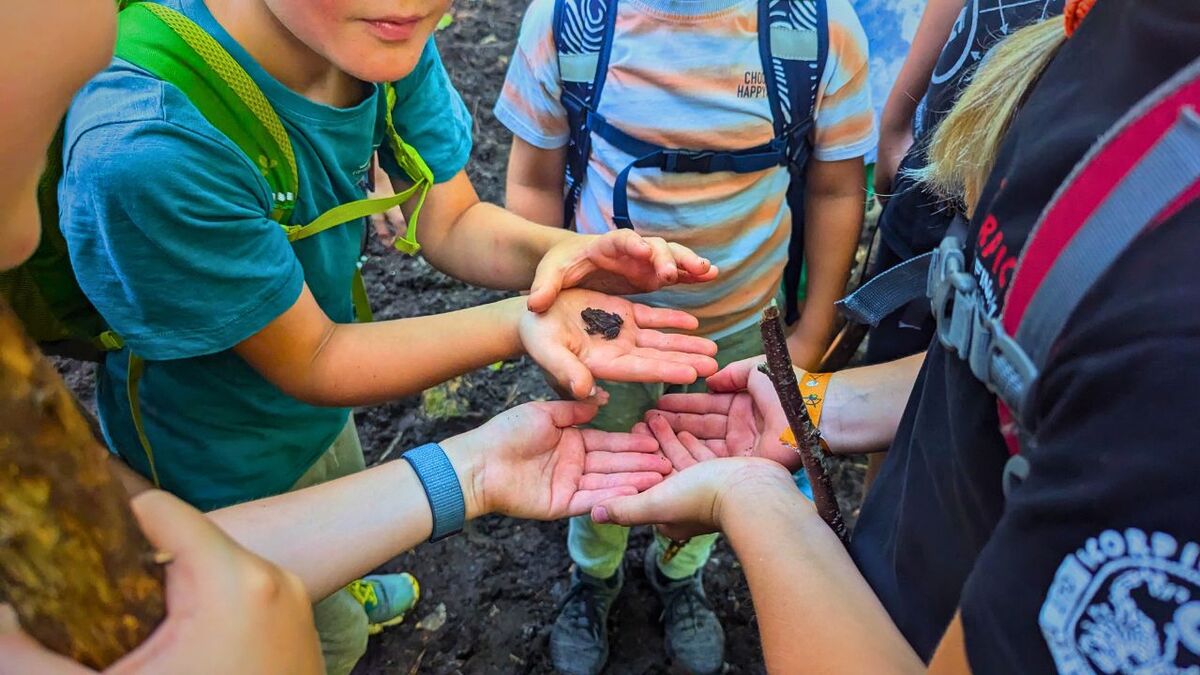
The statements are structured in a way that they start generally and then become more specific (so that it becomes clearer in the end).
There are also a few statements in there that almost no one knows, but are good for conveying knowledge.
Here are three examples of animals to guess:
- Rhinoceros
- I have four legs
- I live in Africa
- I eat grass, leaves, or fruits and branches
- I am damn heavy, over 2000 kg
- I have thick skin
- I have 1 to 2 horns on my snout
- Earwig
- I have 6 legs
- I like to be under damp stones and boards
- I am shiny dark brown
- I have pincers at the end of my abdomen
- I deal with ears, but I don't like being in them (afterwards, I like to tell the children why they are really called earwigs, because they want to know; the earwigs, which are actually called "earworms," were used as medicine in the Middle Ages. The dead insects were supposed to help when ground into powder for earaches.)
- Raven
- I am black
- I am very intelligent
- I have two legs
- I can be found all over the world, except in Antarctica
- I can fly
- I drop nuts from the air to crack them
Which apps can complement or replace hiking games?
While it is important to enjoy nature and not constantly look at a smartphone, well-chosen apps can enrich the hiking experience and provide additional entertainment.
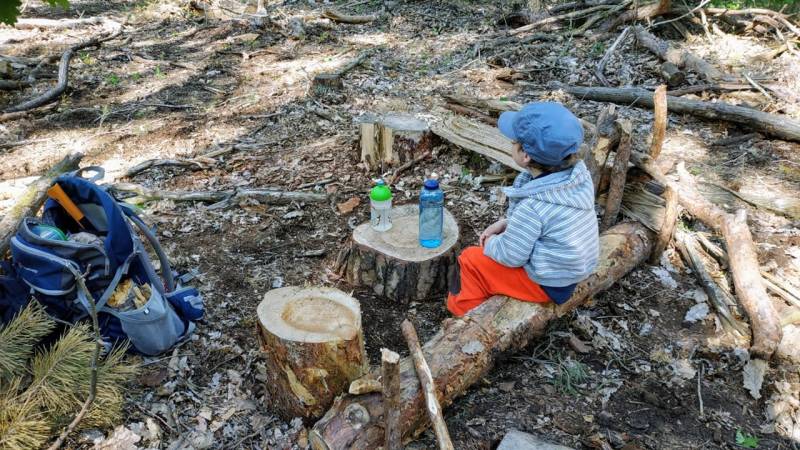
Are there geocaching apps for hikers?
Geocaching is a modern form of treasure hunting that combines excellently with hiking.
There are several geocaching apps, such as "Geocaching" or "C:geo", that allow hikers to find hidden "caches" in nature.
These apps turn hiking into an exciting adventure, where you not only explore the surroundings but also solve puzzles and find small treasures.
Geocaching can be a particularly motivating addition to hiking for children and teenagers.
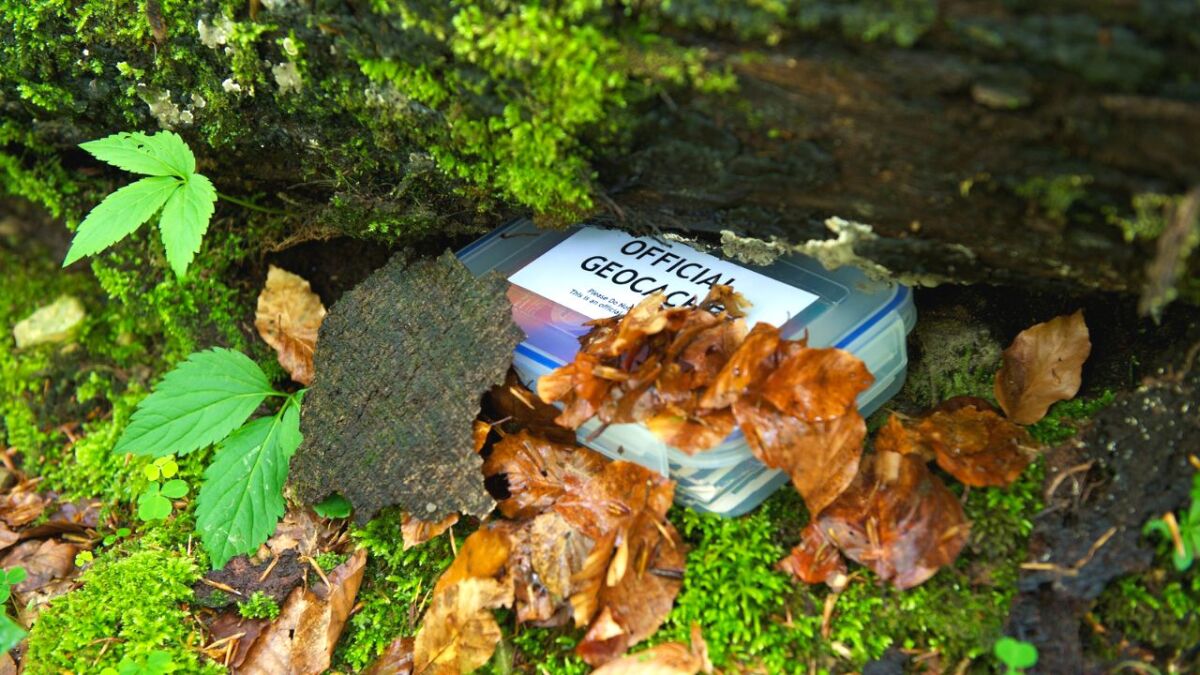
Which quiz apps are suitable for hikes?
Quiz apps can be a fun addition to traditional hiking games. Apps like "Quizduell" or "Trivial Pursuit" can be easily played during breaks or slower sections of the hike.
You could also choose thematic quiz apps that deal with nature, geography, or local history to enhance the hiking experience.
Tip: It is important that the apps work offline, as there is often no stable internet available in many hiking areas.
How can nature apps be integrated into hiking games?
Nature apps like "PlantNet" or "BirdNet" can be integrated into exciting hiking games. These apps assist in the identification of plants and birds and can serve as a basis for a "Nature Bingo".
Before the hike, one creates a list of plants or animals that one might see. During the hike, the participants then try to find as many of them as possible and identify them using the app.
This promotes observation skills and imparts knowledge about the local flora and fauna.
Read also
5 known conifers identify and recognize by their needles – Get to know 5 known conifers briefly and concisely. I will show you how to quickly and easily identify conifers using only their needles.
How can you explore the surroundings playfully while hiking?
Exploring the surroundings is an essential part of the hiking experience. Through playful approaches, you direct the attention of hikers to nature while also providing entertainment.
This not only promotes awareness of the environment but also makes the hike an interactive and educational experience.
Which hiking games train the powers of observation?
A popular game is "Nature Memory", where participants intensely observe an area for a short time and try to remember as many details as possible. Afterwards, they collect exactly the same items in the surroundings.
"Find the Difference" is a similar game: Lay out a picture made of different materials. Let the children look at it for 20 seconds. Then you show them the same laid-out picture, but with a change. So, can they find the difference?
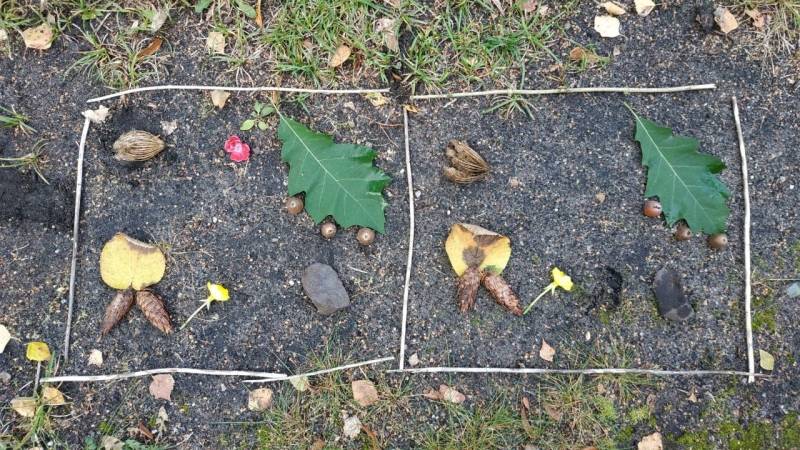
Another option is the "Sound Guessing", where the hikers close their eyes for a minute and perceive all the sounds. Afterward, the heard sounds are compared and discussed.
What I also like is the game "Thought Eye". I enjoy playing it during a break with my children. I ask them to close their eyes and point in the direction where the sun is - or where the parking lot is.
You can think of many other things, such as:
- In which direction is the large tree with the white bark?
- Where is the moon currently (sometimes visible during the day)?
- Where is north currently?
- etc.
And with "Forest Alphabet", it can get tricky - but it's fun. The children search in the forest for objects for each letter of the alphabet, e.g., A for Ant, B for Branch.
These games draw attention to the environment and promote a conscious perception of nature.
How can natural materials be incorporated into games?
Natural materials, such as birchbark, trees, or edible plants, offer almost endless possibilities for creative play.
A simple yet entertaining game is "Nature Art", where participants create small artworks using found materials like leaves, stones, or twigs. You might know the game by the name "Mandala".
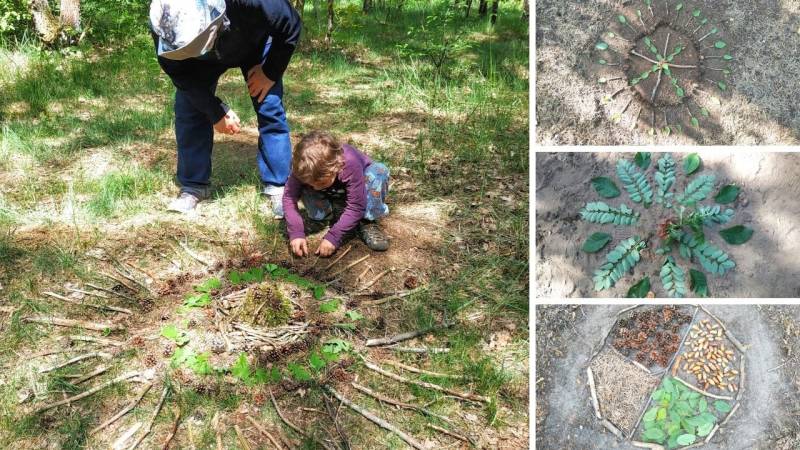
Another game is "Nature Bingo", where bingo cards with various natural items are created before the hike.
During the hike, participants look for the listed materials. I have created an example for you here in the form of a PDF document.
👉 Download Nature Bingo Worksheet (PDF for printing)
I really enjoy "search orders" and the kids love collecting things.
Prepare a few flashcards at home on which you write what should be collected. The game is good for children who can already read. For younger children, you read everything aloud.
The cards say, for example, the following:
- something spiky
- something round
- something soft
- something hard
Alternative: The same game can be wonderfully played with "search orders for colors". The cards then display different colors, such as "a bit of brown, red, green, white, etc.". Difficult colors, like blue or yellow, you will probably only find in summer with flowers.
These games stimulate creativity while promoting awareness of the diversity of nature.
Which puzzles can be connected with landscape features?
Landscape features can be excellently incorporated into puzzles and games - not only for families but also for large hiking groups.
An example is the "Landscape Quiz", where participants have to answer questions about visible landscape elements, such as estimating the height of a mountain or determining the cardinal direction based on landmarks.
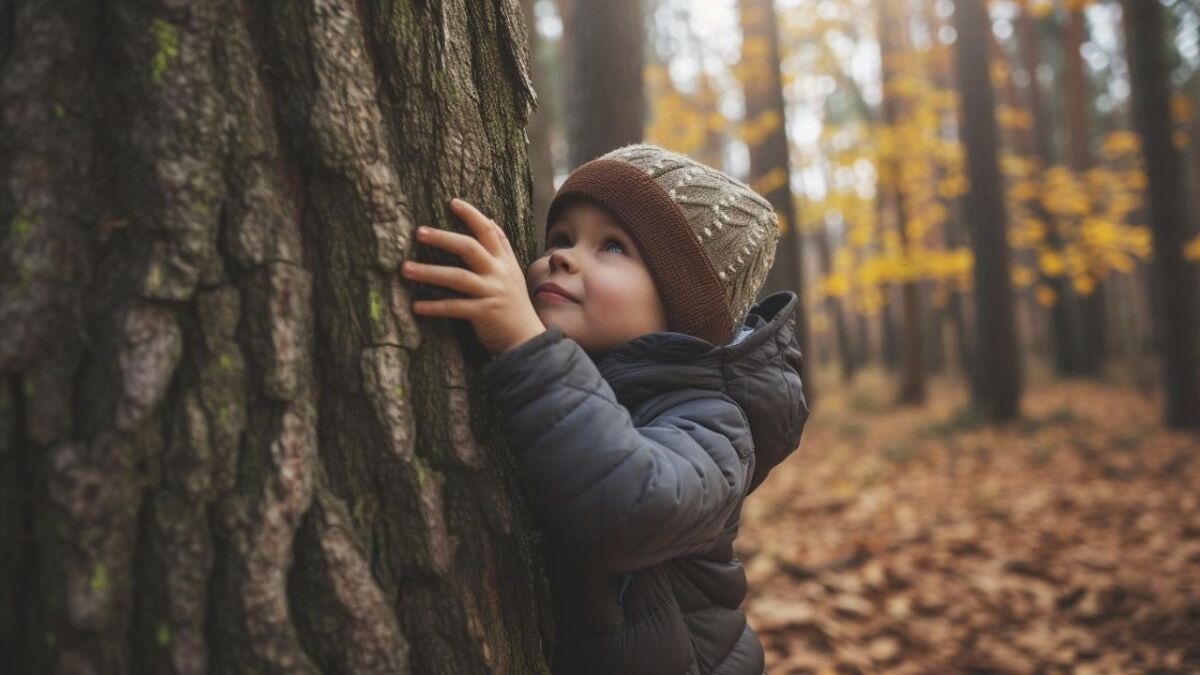
Another game could be "Landscape Story", where the group collectively invents a story that incorporates various visible landscape features.
These games not only enhance observation skills, but they also stimulate the imagination and can lead to amusing narratives.
Read also
Navigation and orientation without a compass – these 11 methods will help you determine directions safely – Navigate confidently without a compass using these 11 methods. Use the sun, the moon, the stars, or trees and plants for orientation without a compass.
Which games are suitable for long hikes for distraction?
Long hikes can sometimes be tiring, especially when the scenery becomes monotonous or the legs feel heavy (always think of your safety while hiking).
In such situations, games that engage the mind and distract from physical exertion are particularly valuable.
They help bridge the gap (especially for children) and ensure that the hike remains enjoyable.
How does the "Category Game" work while hiking?
The "Category Game" is a simple yet effective game for distraction during long hikes. One player names a category, e.g., "Cities in Europe," and the participants must take turns naming suitable terms.
If someone can no longer find a suitable term or repeats one that has already been mentioned, they are out. The game can be repeated as often as desired with new categories.
An option for advanced players is to arrange the answers alphabetically, starting with "Cities in Europe" with A for Amsterdam, then B for Barcelona, and so on.
Here are some more ideas:
- Mammals
- Animals in your country
- Tree species
- Insects
- Plants
- Mountains
- Rivers
Which storytelling games can hikers and hiking groups entertain?
Story games are a wonderful way to pass the time during a long hike and to foster creativity.
A popular game is the "continuation story", where each participant takes turns adding a sentence to a shared story.
To make it more exciting, one can introduce rules such as that each sentence must begin with the next letter of the alphabet.
Another fun game is "What if …", where the hikers take turns coming up with absurd scenarios and the others have to react to them.
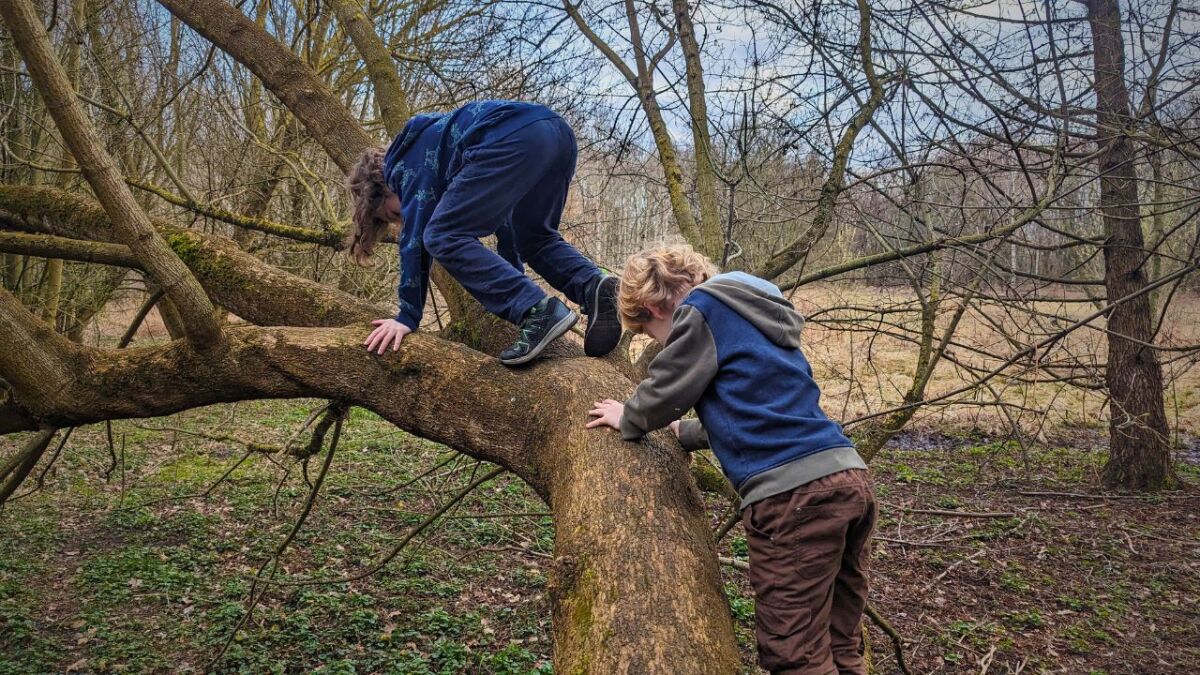
How can you play "Scattergories" while hiking?
"Scattergories" is a classic among word games and can be easily adapted to the hiking situation.
Instead of writing on paper, one agrees on a (few) specific number of categories (e.g., city, country, river, profession, animal) and a letter.
Then all players try to find matching terms at the same time. Whoever has a term for each category first shouts "Stop," and the points are compared.
This game can be varied in any way by adapting the categories to the hiking environment, e.g., with categories such as mountain, plant, rock, or weather element.
"City, Country, River" promotes quick thinking and expands knowledge about various topics. It is especially fun with older children and adults.
Conclusion: Experience Nature Through Games and Strengthen Family Bonds
The 36 hiking games I introduced to you offer a wide range of options to prevent boredom and actively shape the time spent together in nature.
It is important that we parents lead by example. Our enthusiasm for nature and the joy of play are contagious.
If you actively participate and explore your surroundings with curiosity, you also motivate your children to discover and appreciate the wonders of nature.
Ultimately, the focus of a hike should not be on reaching the destination, but on the journey there.
The shared experiences, the laughter, the conversations, and the small discoveries along the way are what make a hike something special.
The games help you focus on these valuable moments and strengthen the joy of nature as well as the sense of belonging in your family.
And if nothing helps: Take a break. My secret tip: Get the gas stove out and make some popcorn.
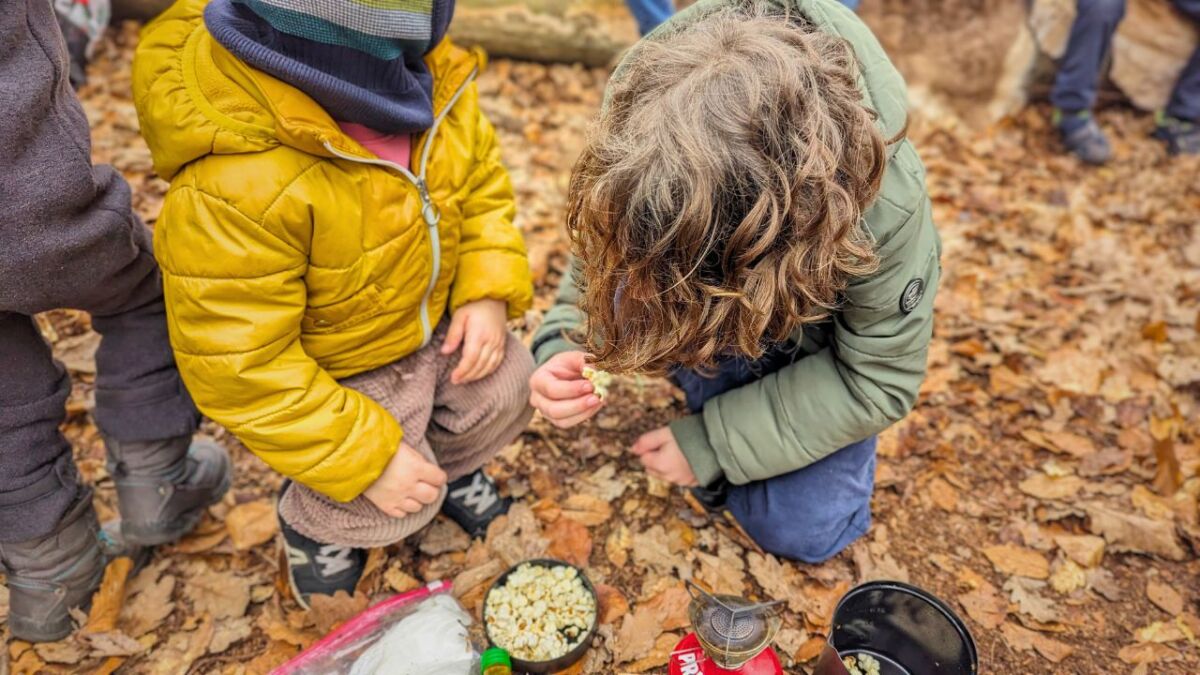
So pack your backpack, lace up your hiking shoes, and hit the road.
Let yourself be inspired by the beauty of the surroundings, enjoy the time together, and create memories that will last a lifetime.


Author of the guide
Martin Gebhardt
Hey, I'm Martin. On my blog, you will learn the basics and numerous details about living in the wild. I think survival, bushcraft and the good life in nature are the keys to happiness. Find me here on Instagram or on YouTube. You can find more about my mission on the About Me page.
Was this guide helpful?
18 people found this guide helpful.
5.00 out of 5 points (18 Ratings)
Comments (0)
This post may contain affiliate links. So if you click on the links and make a purchase, I will receive a small commission at no additional cost to you. Click here, to learn more about it.


